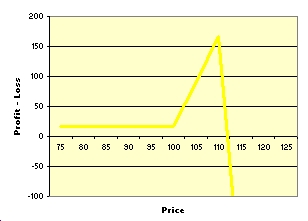
A higher ratio is more desirable than a low one as a high ratio tends to point to strong sales. By identifying competitive items and strategically managing inventory, a company can increase its market share and rankings within an industry. Effective retail inventory management isn’t easy and requires knowledge of profit margins, seasonality, sales margins, as well as some other important factors. Businesses that typically have a high volume of sales with a low margin generally have a high inventory turnover ratio. There are a number of formulas that can be used to calculate inventory turnover, but whichever one a company chooses, they will need data from the balance sheet.
It can include the cost of raw materials and labor costs required for making the goods. In the wake of the COVID-19 pandemic and escalating tensions with China, American companies are actively seeking alternatives to mitigate their supply chain risks and reduce dependence on Chinese manufacturing. Nearshoring, the process of relocating operations closer to home, has emerged as an explosive opportunity for American and Mexican companies to collaborate like never before.

Capitalizing on seasonality is another way to craft a marketing strategy to increase your inventory turnover rate. We recommend observing customers’ existing purchasing patterns to determine natural seasonality. Include the relative seasonal performance of different sales channels as you examine these trends.
The inventory turnover ratio is an efficiency measure that is primarily used to check how quickly your business is able to sell its inventory. Your business’s efficiency ratio can be compared to general industry standards for better performance understanding. Inventory turnover measures how efficiently a company uses its inventory by dividing its cost of sales, or cost of goods sold (COGS), by the average value of its inventory for the same period. Because the inventory turnover ratio uses cost of sales or COGS in its numerator, the result depends crucially on the company’s cost accounting policies and is sensitive to changes in costs. For example, a cost pool allocation to inventory might be recorded as an expense in future periods, affecting the average value of inventory used in the inventory turnover ratio’s denominator. Ultimately, the inventory turnover ratio measures how well the company generates sales from its stock.
Evaluate market trends and customer demand
That way, you can drive quicker sales with targeted promotions that ride your existing waves. The inventory turnover formula is also known as the inventory turnover ratio or the stock turnover ratio. It details how much inventory is sold within a period, commonly a year. But, the higher ratio is better; This means that the business is selling off its inventory at a faster rate, which ensures better cash flows and higher profits.

DSI is calculated as average value of inventory divided by cost of sales or COGS, and multiplied by 365. An overabundance of cashmere sweaters, for instance, may lead to unsold inventory and lost profits, especially as seasons change and retailers restock accordingly. A high inventory turnover ratio, on the other hand, suggests strong sales.
Ideal Inventory Turnover Ratio
If you are facing a low inventory turnover ratio, one of the most constructive and long-term solutions is investing in marketing and advertising. The consumers would know that your product is available in the market. The inventory-to-saIes ratio is the inverse of the inventory turnover ratio, with the additional distinction that it compares inventories with net sales rather than the cost of sales. If the inventory ratio is too high, meaning somewhere in the double digits, then your company is limiting its revenue by curtailing sales to fit a too-small inventory supply. It usually takes time for new stock to arrive and be placed in the sales cycle. It may mean your company isn’t purchasing enough inventory to support the rate of sales.
5 Stocks With High ROE to Buy in a Roller Coaster Market – Nasdaq
5 Stocks With High ROE to Buy in a Roller Coaster Market.
Posted: Tue, 08 Aug 2023 14:50:00 GMT [source]
The real competition and influential decisions would come from comparing your inventory turnover ratio with your competitor’s. Meanwhile, if inventory turnover ratio increases as a result of discounts or closeouts, profitability and return on investment (ROI) might suffer. Inventory turnover measures how often a company replaces inventory relative to its cost of sales. This standard method includes either market sales information or the cost of goods sold (COGS) divided by the inventory. For example, in the case of seasonal sales, inventories of certain items — like patio furniture or artificial trees — are pushed abnormally high just ahead of the season and are seriously depleted at the end of it. However, turnover ratio may also be calculated using ending inventory numbers for the same period that the cost of goods sold (COGS) number is taken.
High and Low Inventory Turnover Ratios Explained
A higher inventory turnover ratio is generally better for your business. It indicates that you are selling your products quickly and efficiently, which can lead to increased profits and cash flow. However, it’s important to strike a balance between having a high inventory turnover ratio and maintaining enough stock levels to meet customer demand. The inventory turnover ratio, also known as the stock turnover ratio, is an efficiency ratio that measures how efficiently inventory is managed. The inventory turnover ratio formula is equal to the cost of goods sold divided by total or average inventory to show how many times inventory is “turned” or sold during a period. The ratio can be used to determine if there are excessive inventory levels compared to sales.
- You’ll want to look a bit deeper into inventory turnover differences based on industry, the size of the business, and other factors.
- Today, you can use software to track your inventory and automate the calculation of your ITR and other vital metrics.
- This gives you much better control over inventory and a better harvest of sales opportunities.
- Studies suggest that stocks with higher inventory ratios tend to outperform industry averages.
- Separating out long-term and short-term storage can improve a facility’s inventory turnover ratio, and even save some brands money in certain scenarios.
Another is to use technical analysis to identify potential market trends. Technical analysis uses charts and other data to identify patterns that may indicate where the market is heading. Of course, trying to predict market movements is notoriously difficult.
The Effects of Inventory Forecasting on Budgeting
Number of KPIs that can provide insights into how to increase sales or improve the marketability of certain stock or the overall inventory mix. If you’re continually restocking inventory right as you’re running out of it, your inventory levels could get dangerously low. The slightest hitch in your supply chain can lead to a shortage, which means you might not be able to meet customer demand.
Zacks.com featured highlights JAKKS Pacific, GMS, Hubbell, SherwinWilliams and Toll Brothers – Yahoo Finance
Zacks.com featured highlights JAKKS Pacific, GMS, Hubbell, SherwinWilliams and Toll Brothers.
Posted: Mon, 07 Aug 2023 09:00:00 GMT [source]
By calculating and recording the inventory turnover ratio, businesses can make better decisions in several ways. In order to calculate the inventory turnover ratio, a company needs to know what stock it has on hand. General consumer packaged goods will typically have a high turnover ratio, while in contrast, many costly luxury goods will require long production times and see very low turnover rates. This financial ratio a higher inventory ratio indicates tells how many times a company has sold inventory and replaced it in a given period of time. While software is the most accurate way to calculate inventory turnover at a high level of detail, all the information you need for a quick inventory turnover calculation is available on your financial statements. Plug those numbers into the formula above, or use the calculator below to quickly determine your turnover ratio.
If you find yourself replenishing a certain SKU over and over again in a certain time period, try increasing the number of units you order to bolster SKU levels. Just be sure to recalculate your reorder point and safety stock levels to make sure that your inventory levels stay optimized. This process is very relative to your brand’s size (a small ecommerce business should not be comparing themselves to public companies). Rationalize SKUs on pace with cash flow, margin, lead time, and MOQ, and be sensible to what a customer really needs. There is no right or wrong turnover rate — but optimizing your product line, replenishment strategy, and even warehouse can help your bottom line.
If you divide the number of days in the year (365) by your ITR, you’ll get your days’ sales of inventory. So, let’s say your sales for the year totaled $500,000, and your average inventory value on any given day was $100,000. Order management systems, including Skubana, equip brands to develop and offer the right product bundles at the right price to increase both turnover and profit. ProfitBooks is one of the fastest-growing, leading, and most reliable online software in the world of accounting. With ProfitBooks, you cant just track expenses but also manage inventory, create invoices and do a lot of things online. For example, the companies that sell food items or products that expire quickly have low DII while those companies which sell slow-moving products or non-perishable products tend to have a high DII.
- An overabundance of cashmere sweaters, for instance, may lead to unsold inventory and lost profits, especially as seasons change and retailers restock accordingly.
- You can determine the average inventory value by adding together the beginning inventory and ending inventory balances for a single month, and dividing by two.
- It gives an idea to the investors about how long it will take the company to convert the inventory into sales.
- A company can then divide the days in the period, typically a fiscal year, by the inventory turnover ratio to calculate how many days it takes, on average, to sell its inventory.
Inventory turnover is the ratio of how much a company has sold its products and replaced its supply during a specific period of time. Learn more about the definition of inventory turnover, formulas used for computing it, and the calculation steps for determining it. Depending on the industry that the company operates in, inventory can help determine its liquidity. For example, inventory is one of the biggest assets that retailers report. If a retail company reports a low inventory turnover ratio, the inventory may be obsolete for the company, resulting in lost sales and additional holding costs. An increased level of inventory turnover ratio would mean faster selling products, increasing operating profit, and enhancement in the overall business revenue.
The inventory turnover ratio is a measure of how many times the inventory is sold and replaced over a given period. Calculating and tracking inventory turnover helps businesses make smarter decisions in a variety of areas, including pricing, manufacturing, marketing, purchasing and warehouse management. This ratio indicates the number of times a company’s inventory is sold and then replaced over a certain period of time. The inventory turnover ratio can be found by dividing the cost of goods sold by the average inventory for the period.

This may also identify opportunities to alter its overall product mix and introduce new sales strategies such as bundling certain products, potentially improving profit margin as well. By managing inventory turnover in relation to a company’s peers, it can help identify emerging opportunities. If an inventory turnover ratio is extremely high, generally somewhere around ten or more, then it means that sales are being hampered by an inventory that is too small. Therefore, Dave’s Handmade Rugs typically has a low inventory turnover ratio. The business’s inventory turnover ratio would be found by dividing $40,000 by $20,000. The store had a cost of goods sold of $40,000 and an average inventory of $20,000.
Income ratio is a metric used to measure the ability of a technology to recover the investment costs through savings achieved from customer utility bill cost reduction. The ratio divides the “savings” by the “investment”; an SIR score above 1 indicates that a household can recover the investment. Suppose a retail company has the following income statement and balance sheet data. In some cases, companies use the ending inventory number, which is not ideal, but for companies with fairly stable levels of inventory from one year to the next, this may cause only a minor inaccuracy.

